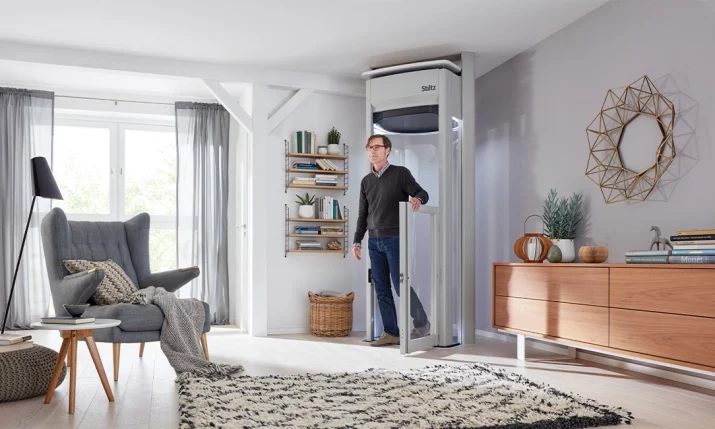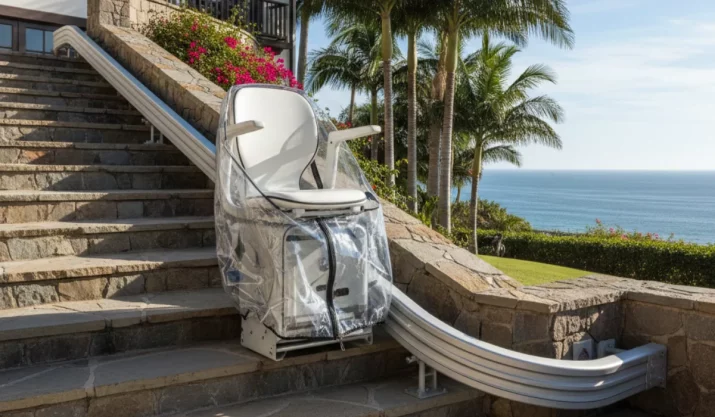Home Elevator Installation in California: A Step-by-Step Guide

Table of Contents
- Key Takeaways
- Understand Your Home’s Layout and Elevator Needs
- Choose the Right Type of Elevator
- Secure Permits and Meet California Code Requirements
- Customize Your Elevator Design
- Prepare Your Home for Construction
- Install the Elevator System
- Pass the Final Inspection and Certification
- Learn to Use and Maintain Your Elevator
- Ready to start your home elevator project? Talk to the experts at California Mobility.
Installing a home elevator isn’t just about convenience. It’s about independence, safety, and enhancing your home’s long-term value. For California homeowners, especially those in multi-level residences or looking to age in place, a residential elevator is more than a luxury; it’s a practical solution to improve daily life.
But if you’ve never navigated the elevator installation process before, it can feel overwhelming. Permits, designs, and construction can feel overwhelming at first.
Here’s what to expect during the home elevator installation process in California, step by step.
Key Takeaways
- The kind of elevator you choose depends on your home’s layout, space, and what you need daily.
- A trusted elevator company like California Mobility will handle all necessary permits so everything meets California’s safety codes.
- Construction includes customizing your elevator, preparing your home, installing the system, and passing a final safety inspection.
- After everything is installed, you’ll get training, support, and maintenance to keep your elevator running smoothly long-term.
Understand Your Home’s Layout and Elevator Needs
Every successful installation starts with understanding your home’s specific requirements. This involves evaluating the layout, number of floors, and available space for an elevator shaft or hoistway.
In California, where homes vary from hillside properties to compact city dwellings in places like Los Angeles, the type of elevator, hydraulic, pneumatic (vacuum elevators), or shaftless, depends heavily on your home’s structure.
Before installation, an initial site visit will determine whether you need a traditional elevator with a machine room or if a more compact solution, like a shaftless residential lift, is a better fit.
Choose the Right Type of Elevator
With so many options, the best choice isn’t one-size-fits-all.
Californians often opt for pneumatic elevators in modern homes because they’re energy-efficient, sleek, and don’t require a machine room.
Meanwhile, hydraulic elevators are still preferred for their smooth ride and higher weight capacity, especially in larger or luxury homes.
Your elevator company will walk you through the pros and cons of each model based on your lifestyle, space, and budget.
Secure Permits and Meet California Code Requirements
California has specific building codes and ADA considerations for elevator installation, especially if it serves a resident with mobility needs.
Your elevator contractor should handle the permit application with your local city or county building department, ensuring your project complies with California safety standards.
This part of the process might involve inspections and paperwork, but reputable elevator companies handle these details for you, streamlining the experience and keeping you informed along the way.
Customize Your Elevator Design
Once permits are underway, it’s time to make your elevator your own. You’ll select elevator features like cabin finishes, lighting, control panels, and even door configurations.
Whether you prefer a minimalist look or want your in-home elevator to complement a high-end interior, the customization phase brings your vision to life.
If you’re in or near Los Angeles, you can visit a showroom to get a better sense of materials, functionality, and styles.
This hands-on step ensures you get an elevator that matches your home and your needs.
Prepare Your Home for Construction
This stage involves the most physical changes to your property.
Your contractor will prep the site, which may include building a new hoistway, modifying an existing wall, or adding support structures.
In some California homes, particularly older or existing homes, careful retrofitting ensures the installation doesn’t compromise the home’s structure.
For homes without a basement, shaftless elevators can be installed with minimal renovation. If you’re building a new home, integrating the elevator into the initial design is even easier and can significantly increase property value.
Install the Elevator System
Now, the pieces come together.
Installation time varies depending on the type of elevator and your home’s readiness. Traditional elevators may take a few weeks to install, while pneumatic models are often quicker because they don’t require a shaft or machine room.
Throughout the process, your installation team will test all safety features, verify weight capacity, and ensure smooth operation.
California Mobility uses only high-quality components and trained technicians to deliver a reliable, long-lasting elevator.
Pass the Final Inspection and Certification
Before you can use your new elevator, it must pass final inspections.
A certified elevator inspector, typically arranged through the local building department, will check all safety systems, wiring, and operational controls.
Once approved, your elevator will receive a certification for residential use. At this point, your home lift is legally ready for use and fully compliant with California codes.
Learn to Use and Maintain Your Elevator
Once the elevator is operational, your installer will show you how to use it safely and efficiently. This includes how to operate emergency systems, phone features, and what to do in case of power loss.
California Mobility also offers regular maintenance plans to keep your elevator running smoothly for years to come.
Investing in regular service and repair helps you avoid future hassle and extends the life of your elevator.
Ready to start your home elevator project? Talk to the experts at California Mobility.
Navigating the home elevator installation process in California doesn’t have to be a hassle. Whether you’re in the planning stages or ready to break ground, California Mobility is here to help turn your blueprints into reality.
Our team specializes in installing home elevators, stair lifts, and wheelchair lifts across California, including Los Angeles and beyond. We provide start-to-finish elevator services, from design to installation and post-installation support.
And if you’re still unsure about what type of elevator is right for you, we’ll walk you through the options and help you find the best fit for your lifestyle and home’s layout.
Call us today or visit our website to schedule your free in-home consultation.






